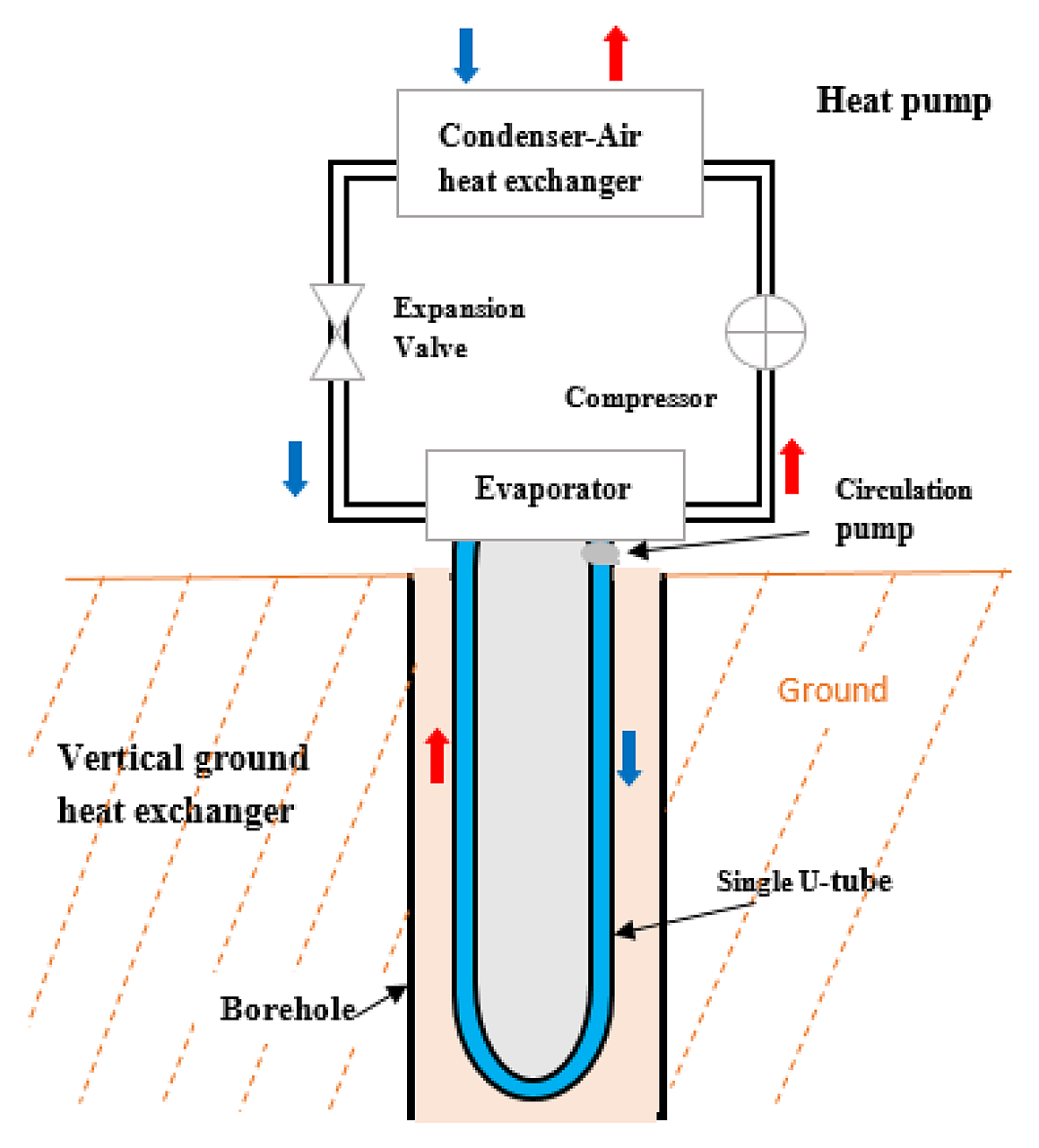Efficiency of ground source heat pump systems
Ground source heat pumps (GHSP) have been reported to be more efficient than more widespread air source heat pumps despite higher installation costs. A recent article has reviewed parameters impacting the energy efficiency of GHSPs.
Geothermal energy is considered the fifth biggest source of renewable energy and is available across the world. [1] Geothermal energy is derived from the thermal energy generated and stored in the Earth's interior. The energy is accessible because groundwater transfers heat from rocks to the surface, either through boreholes or natural cracks and faults.
Ground source heat pumps (GSHP) take up the largest share of direct applications of geothermal energy. Consisting of heat pumps and ground heat exchangers, GSHP systems are employed in the summer to extract heat from buildings and transfer it to the ground, and in winter to extract heat from the ground and transfer it to the buildings.
GSHP systems have been described as more stable and more energy efficient than more common air source heat pump systems. The COP of heat pumps depends on the temperature difference between the heat source and the heat sink. The smaller the temperature difference, the more efficient the heat pump will be. It has been reported that GSHPs usually have a COP in the range of 3-4, but it can reach up to 6 when well designed. [2]
With thermal capacities ranging from less than 10 kWth to over 500 kWth, GSHP systems are suitable for residential houses as well as larger groups of houses. [2] However, their high investment cost, which includes the drilling cost and the difficulty of securing sites for system installation, makes their introduction into small buildings difficult. A previous study had estimated that for a typical closed-loop GSHP system, groundwork and drilling of a borehole alone can account for approximately 60% of the total construction cost. [3] The depth of a geothermal heat exchanger varies from a few metres to more than 200 m, depending on the technology used, geological location, demand profile, and other design considerations. Therefore, for the introduction of GSHP systems into small buildings, ground heat exchangers that can efficiently use the installation area and reduce the initial investment cost are required.

GSHP can be equipped with two types of ground heat exchangers: vertical and horizontal. Vertical ground heat exchangers have many advantages over horizontal ones, such as higher energy efficiency and a much smaller area required for installation.
A recent article has reviewed numerical and experimental studies on the impact of different construction and operation parameters on the thermal efficiency of the vertical ground heat exchanger in a GSHP system. [1]
The authors underlined the following:
- Effects of grout materials (e.g. cement, sand, bentonite clay, etc.) on the thermal performance of ground heat exchangers
- Influence of different piping configurations on the thermal performance of ground heat exchangers
- Effects of borehole depths and diameters on the thermal performance of ground heat exchangers
- Miscellaneous issues related to ground heat exchangers performance (e.g., ground heat transfer characteristics calculation methods; recovery time; performance in arctic/cold climate etc.)
The authors suggest that increased efficiency of ground heat exchangers allows for a reduction in borehole depth, which then decreases the cost of installation. Hence, identification and optimization of construction and operating parameters that can reduce borehole depth are critical design challenges.
For more details, please download the complete article on FRIDOC: https://iifiir.org/en/fridoc/critical-review-on-efficiency-of-ground-heat-exchangers-in-heat-pump-143267
Sources
[1] Eswiasi A, Mukhopadhyaya P. Critical Review on Efficiency of Ground Heat Exchangers in Heat Pump Systems. Clean Technologies. 2020; 2(2):204-224. https://doi.org/10.3390/cleantechnol2020014
[2] Carrara, S., Shortall, R. and Uihlein, A., Geothermal Energy - Technology Development Report 2020. Publications Office of the European Union. https://op.europa.eu/s/oQMr
[3] Kim J, Nam Y. Development of the Performance Prediction Equation for a Modular Ground Heat Exchanger. Energies. 2020; 13(22):6005. https://doi.org/10.3390/en13226005
